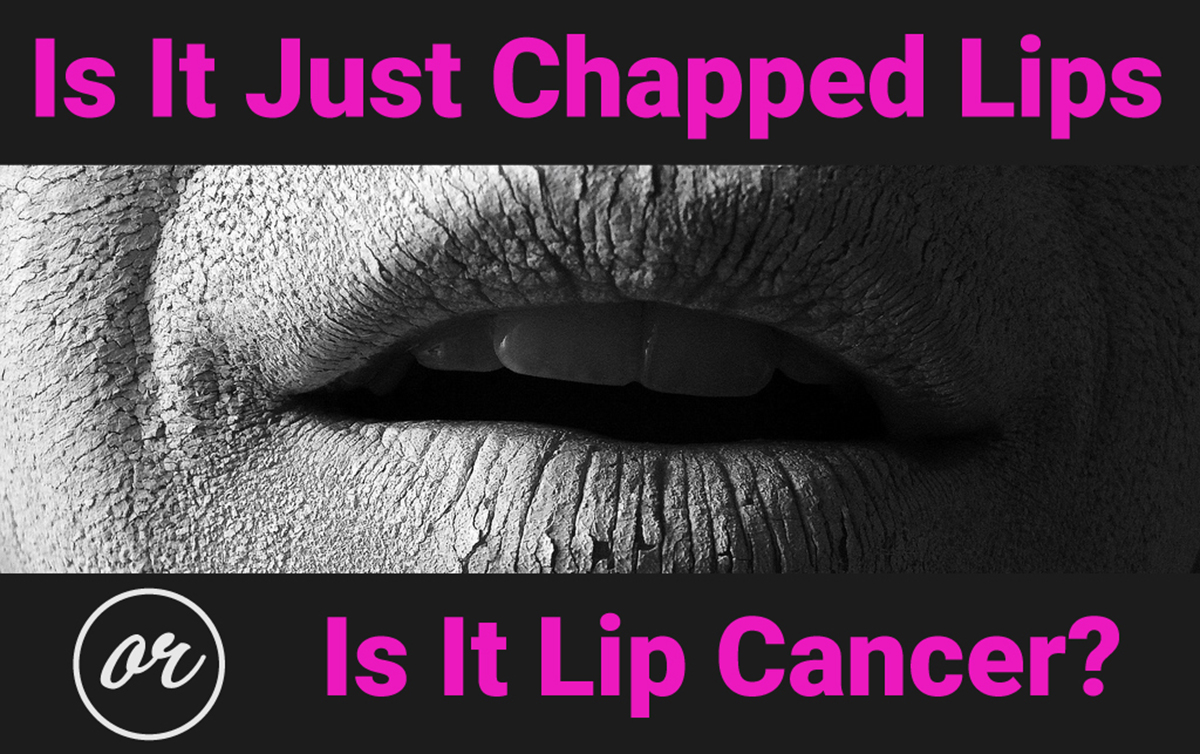Everybody who spends time in the sun sooner or later develops a problem with chapped lips. Ordinarily, dry, flaky, itchy, irritated skin on the lips isn't exactly something you would run to the doctor about. When that area of persistent irritation on your lips just won't go away, however, there's a possibility of something called actinic keratosis, more specifically actinic cheilitis, that can lead to a form of cancer known as squamous cell carcinoma [1].
That's something you need to get treated sooner rather than later. But it's not something that should cause you a panic attack.

What Is Actinic Cheilitis?
Actinic keratosis is a health condition that is "actinic" — meaning it is caused by sun exposure. Actinic keratosis is a kind of pre-cancer skin irritation caused by years (not just a single episode) of excessive or prolonged exposure to the sun [2]. Keratosis is the overgrowth of keratin, the same material of which your nails are made of, on a mucus membrane, which would include the lips.
Actinic cheilitis is an actinic keratosis on the lip. After a very long time, actinic cheilitis can cause a form of cancer called squamous cell carcinoma.
The way sun damage to the lips unfolds is through the accumulation of DNA damage. UV-A rays of sunlight change the DNA of specialized cells in the lips called keratinocytes [2]. These are the cells that make the proteins that keep the lips smooth. As more and more of the DNA of the keratrinocytes becomes defective and can't be repaired [3], the lips become less and less capable of a process called granulation.
Think of granulation as something like sending out a repair crew. The things that happen to your lips that cause irritation, not just sunlight, but also biting your lips, drying out your chapped lips, exposing them to noxious chemicals in chapstick or mouthwash, or allergies, break down the protective protein barrier on your lips so that they are chapped, red, dry, and exposed more and more often. The process can be slowed down by using sunscreen products [4] on your lips or even by taking Aspirin at least a couple of times a week [5], but usually the damage by sunlight outweighs efforts to combat it.
The protective keratin layer gets thinner and thinner. Eventually it starts to "bud," and that's when you see the first signs of squamous cell carcinoma [6].
If there is any good news about squamous cell carcinoma, it's that it is very unusual for it to spread to other parts of the body, although this happens in about 10 percent of cases [7]. However, squamous cell carcinoma of the lip can cause you to have ugly purple bumps on your lips and eventually lose chunks of lip tissue . It's best to stop the process before it goes that far.
When Should You See a Doctor for Chapped Lips?
So, how do you know when to stop relying on natural remedies for chapped lips and finally see a doctor? Only a doctor can treat actinic keratosis, but you can recognize the signs that you need get your doctor to take a look. Actinic cheilitis causes skin changes on the lips that are:
- Small (1 to 3 mm, or about 1/8 of an inch or less),
- Mostly round in shape but possibly irregular (definitely not "pearl-shaped"),
- Scaly (feels like sandpaper),
- White (like skin that has been burned and is ready to peel, only it doesn't peel), or
- Reddish (usually a light red, not dark red),
- Painless
There are usually similar patches of skin on the face, hands, forearms, and neck in these patients. A "pearl-like" appearance signals another kind of cancer called basal cell carcinoma. It's not likely to spread to other parts of the body, either, although it can metastisize dramatically if you have to have chemo for some other condition.
By the time actinic cheilitis has progressed to squamous cell carcinoma, you need medical treatment right away. Squamous cell carcinoma is:
- Not necessarily round,
- Maybe just 1 to 3 mm (up to 1/8 inch) across, but usually closer to 25 mm (1 inch) and growing,
- Oozy and crusty, like a bad cut to your skin,
- Dark red or purple,
- Causing pain, tingling, and/or numbness, and
- Not just limited to the lips.
You can cover up actinic cheilitis with lip gloss or lipstick. You can't cover up squamous cell carcinoma of the lip.
What makes actinic cheilitis turn into squamous cell carcinoma of the lip? Over time, continued exposure to sunlight doesn't just damage the DNA of the cells in your lip, it also interferes with the activity of the immune system [8]. If you just never start using sunscreen of some kind for your lips, or at least wearing a broad-rimmed hat, or limiting your sun exposure, your pre-cancer can become a potentially metastatic cancer that extends deep into your lip [9]. This eventually happens to about one in twenty people who develop this cancer [10].
Don't let it happen to you. See a doctor even if you think you're only dealing with persistently chapped lips that for some reason won't go away. If it's nothing, the lingering worry you must have if you made it this far into the article will be put to rest. If it's pre-cancer or cancer, the earlier you are diagnosed and treated, the better the prognosis.

